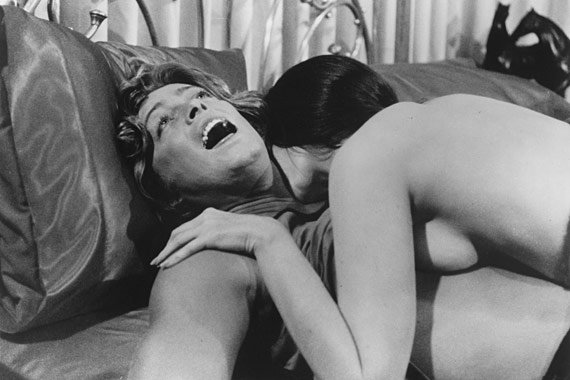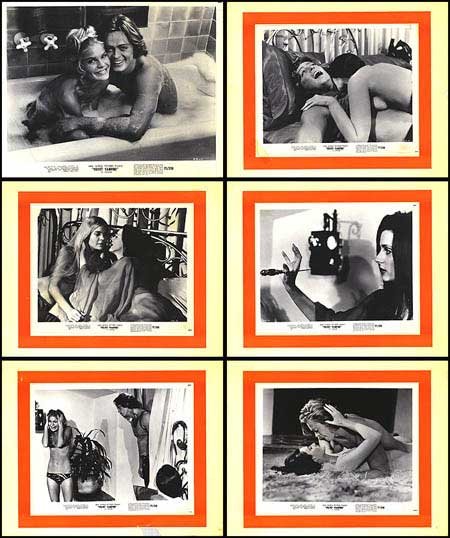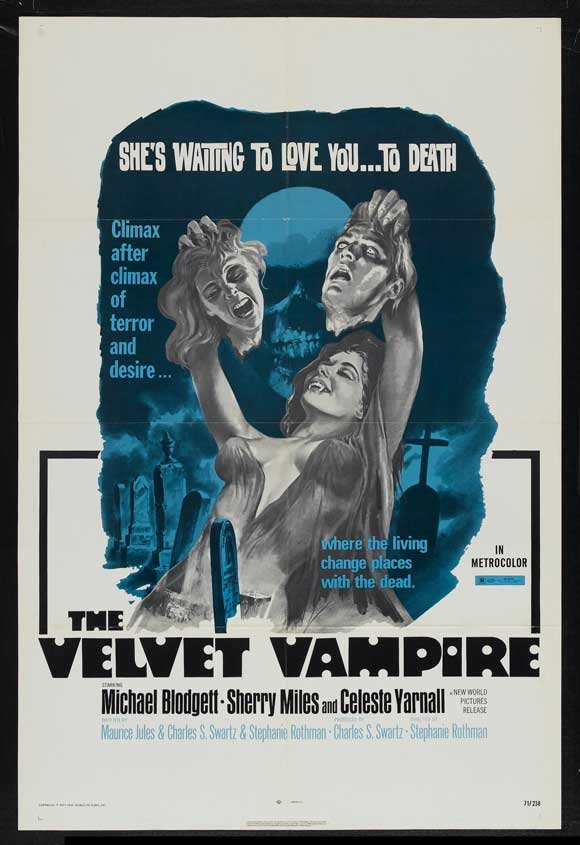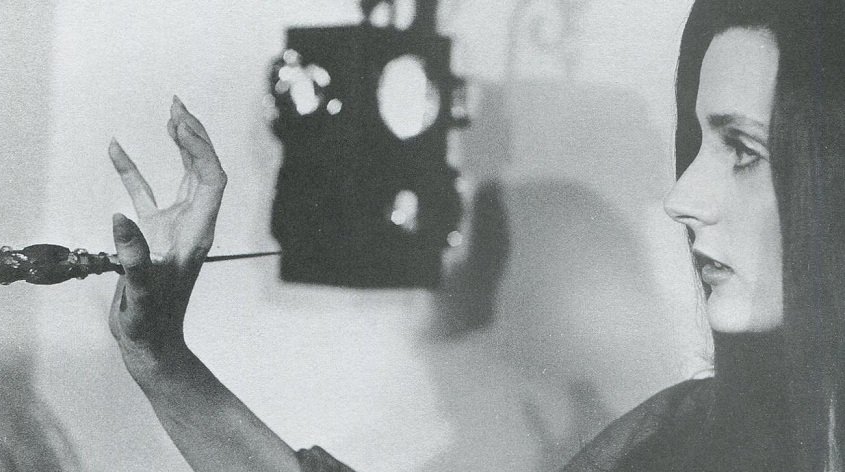THE VELVET VAMPIRE: Feminist Horror Minus The Feminism And Horror
Stephanie Rothman was a unique talent in 1970's b-movie cinema. She was a female director at a time when it was virtually impossible for a woman to get a break in that distinctly masculine profession. She further distinguished herself by carving out her own niche in the tough world of exploitation film, finding success as a director and screenwriter before moving on to run Dimension Pictures with her husband Charles Swartz. Along the way, she created a few drive-in classics like The Student Nurses and Terminal Island. It would be nice to include The Velvet Vampire in her roster of classics - and some critics do - but Your Humble Reviewer found that it fell short of the mark for a few reasons. The Velvet Vampire is essentially a 1970's Californian riff on the story of Carmilla. Celeste Yarnall toplines as Diane LeFanu, a well-to-do art collector who lives in the desert. She entices young stud Lee (Michael Blodgett) at an art gallery event and he talks his jealous girlfriend Susan (Sherry Miles) into spending a weekend at Diane's desert estate.
It would be nice to include The Velvet Vampire in her roster of classics - and some critics do - but Your Humble Reviewer found that it fell short of the mark for a few reasons. The Velvet Vampire is essentially a 1970's Californian riff on the story of Carmilla. Celeste Yarnall toplines as Diane LeFanu, a well-to-do art collector who lives in the desert. She entices young stud Lee (Michael Blodgett) at an art gallery event and he talks his jealous girlfriend Susan (Sherry Miles) into spending a weekend at Diane's desert estate. Supernatural trouble soon rears its ugly head when the two arrive. Their car breaks down, the locals are distinctly un-welcoming and Diane and her home have the same mysterious, entrancing yet frightening vibe. However, the strangest things happen at night: Lee and Susan find themselves sharing a recurring nightmare in which Diane interrupts them during a desert lovemaking session to take Lee away. The two must figure a way out of their purgatory-style trap before Diane can make their mutual nightmare come true.The Velvet Vampire has a lot of distinctive elements that will stick in the memory. The film uses its arid desert locale to atmospheric effect, thanks to lovely photography by Daniel Lecambre. Yarnall gives a commanding performance as the title character, creating a presence without resorting to familiar vampire-movie mannerisms. There's also the occasional effective moment of
Supernatural trouble soon rears its ugly head when the two arrive. Their car breaks down, the locals are distinctly un-welcoming and Diane and her home have the same mysterious, entrancing yet frightening vibe. However, the strangest things happen at night: Lee and Susan find themselves sharing a recurring nightmare in which Diane interrupts them during a desert lovemaking session to take Lee away. The two must figure a way out of their purgatory-style trap before Diane can make their mutual nightmare come true.The Velvet Vampire has a lot of distinctive elements that will stick in the memory. The film uses its arid desert locale to atmospheric effect, thanks to lovely photography by Daniel Lecambre. Yarnall gives a commanding performance as the title character, creating a presence without resorting to familiar vampire-movie mannerisms. There's also the occasional effective moment of  creepiness, the best being the recurring nightmare the two heroes share: it includes a stunning moment where Diane emerges from a mirror.Unfortunately, the story that connects these elements never really gives it the support it needs. Rothman presents an alternative view of the vampire mythos - for example, Diane is free to move about in the sun though she is careful to stay covered - but it is never fully explored or defined. In fact, Rothman never really seems comfortable with the story's horror elements and tends to rush through the setpieces in a perfunctory, unenthusiastic manner.The most unfortunate misstep is it fails to use its female-centric twist on vampirism to explore a theme or message. It's merely there as a twist of expectations and nothing more - and the film's inability to explore the relationship/conflict between Susan and Diane means it falls short of better of female vampire films like Daughters Of Darkness. Susan is also an annoyingly passive character who doesn't become active until
creepiness, the best being the recurring nightmare the two heroes share: it includes a stunning moment where Diane emerges from a mirror.Unfortunately, the story that connects these elements never really gives it the support it needs. Rothman presents an alternative view of the vampire mythos - for example, Diane is free to move about in the sun though she is careful to stay covered - but it is never fully explored or defined. In fact, Rothman never really seems comfortable with the story's horror elements and tends to rush through the setpieces in a perfunctory, unenthusiastic manner.The most unfortunate misstep is it fails to use its female-centric twist on vampirism to explore a theme or message. It's merely there as a twist of expectations and nothing more - and the film's inability to explore the relationship/conflict between Susan and Diane means it falls short of better of female vampire films like Daughters Of Darkness. Susan is also an annoyingly passive character who doesn't become active until  the plot makes it necessary. The fact that Miles gives a flat, often grating performance as our heroine seals the character's fate.Simply put, The Velvet Vampire never makes good on its potential as a horror film or a feminist commentary piece. Vampire completists might find it worth a spin but the film is best viewed as a time capsule rather than a successful example of exploitation filmmaking.
the plot makes it necessary. The fact that Miles gives a flat, often grating performance as our heroine seals the character's fate.Simply put, The Velvet Vampire never makes good on its potential as a horror film or a feminist commentary piece. Vampire completists might find it worth a spin but the film is best viewed as a time capsule rather than a successful example of exploitation filmmaking.


